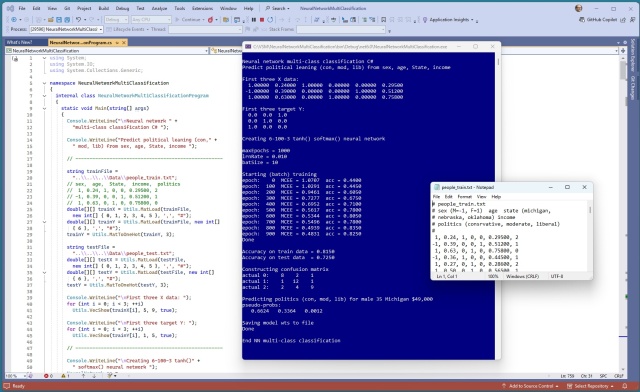O2's 'AI granny' Daisy tricks scammers by wasting their time with ambivalence and confusion. Created by computer scientists, Daisy draws sighs and snapping from fraudsters with her eagerness to reminisce about her younger days.
MIT Generative AI Impact Consortium, led by industry and MIT experts, aims to harness AI's transformative power for societal good, addressing challenges proactively. The consortium focuses on developing a solid foundation for generative AI to maximize benefits and minimize risks, aligning timelines with industry needs for real-time progress.
Innovative ReVIEW Webapp accelerates video/audio review with human-AI collaboration, avoiding hallucinations. Built on Amazon Transcribe and Bedrock, ReVIEW provides accurate insights for professionals in various fields.
Speaker to present "Introduction to Neural Networks Using C#" at 2025 Visual Studio Live conference in Las Vegas. Demo includes multi-class classification system predicting political leaning from synthetic dataset.
MuleSoft integrates Amazon Q Apps AI assistant into Cloud Central portal for improved knowledge sharing and productivity among over 100 engineer teams, replacing previous chatbot solution. Amazon Q Apps utilizes internal data to provide conversational assistance, generate custom content, and execute workflows with robust security controls.
Nicolas Cage warns against AI in films while winning best actor for Dream Scenario at Saturn awards, denouncing "the new AI world."
AI advancements have merged NLP and Computer Vision, leading to image captioning models like the one in "Show and Tell." This model combines CNN for image processing and RNN for text generation, using GoogLeNet and LSTM.
NHS launching massive AI trial for breast cancer detection to speed up testing and reduce radiologists' workload by half. AI to analyze 2/3 of 700,000+ mammograms in England for accuracy compared to radiologists.
MIT researchers developed an automated system to reduce energy consumption in AI models by utilizing data redundancies. The system improved computation speed by nearly 30 times and could optimize algorithms for various applications.
Over 100 experts, including Sir Stephen Fry, warn against irresponsible development of AI systems with feelings. They propose five principles to guide responsible research into AI consciousness amid rapid advances.
OpenAI unveils "deep research" AI tool to rival human research analysts, claiming to match their output in minutes. The tool is designed to compete with China's DeepSeek in the AI agent market.
Learn about entropy in data science, quantifying surprise and uncertainty, with practical applications from decision-making to DNA diversity. Explore fun puzzles and tutorials, no prior knowledge required.
An exploration of neural networks inspired by the human brain, including back-propagation training. Understand AI at its core.
Plotly lacks a "data journalism" template but this series transforms its charts into sleek, professional-grade visuals. Learn how to effectively visualize complex data scenarios using Plotly in this insightful blog post.
Mark Thomson, the next director general of Cern, believes AI will transform particle physics, potentially revealing the fate of the universe. Machine learning advancements in physics could be as groundbreaking as Google DeepMind's Nobel prize-winning protein structure prediction.















